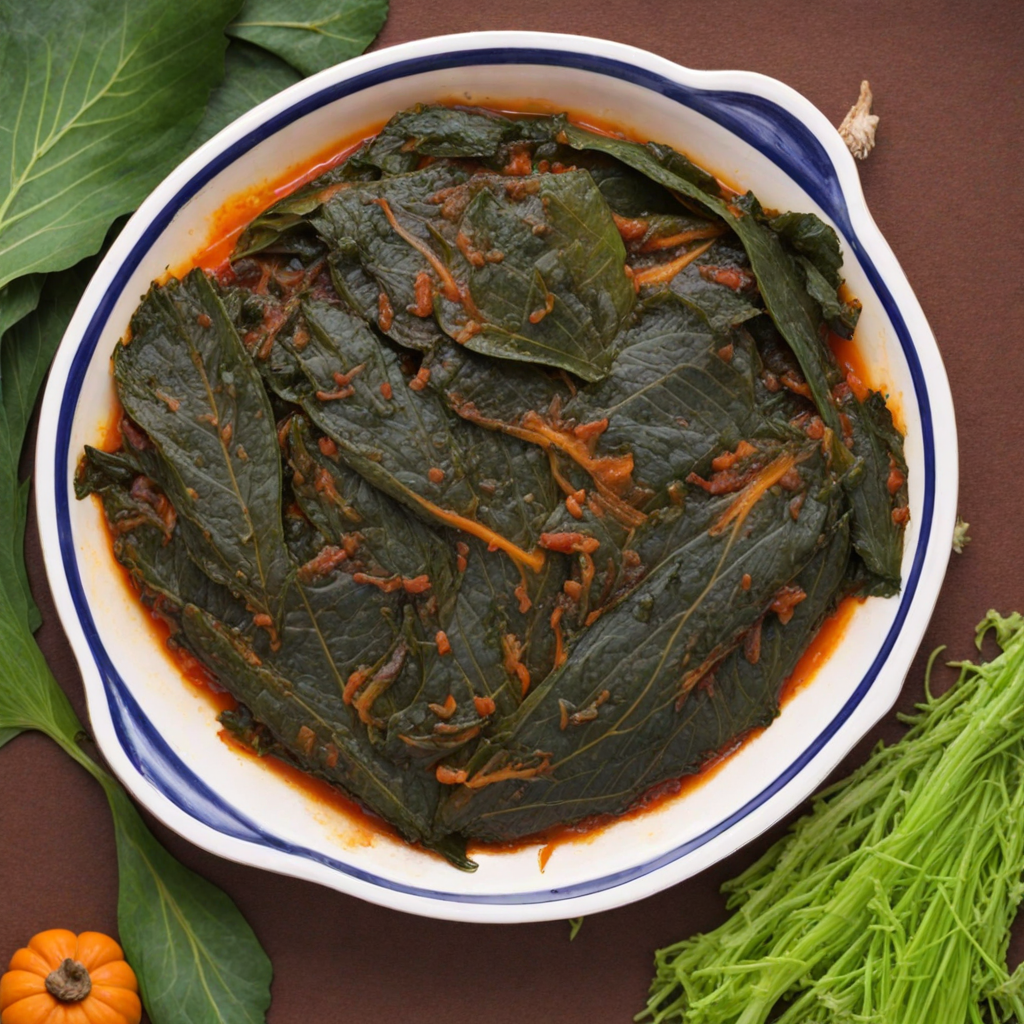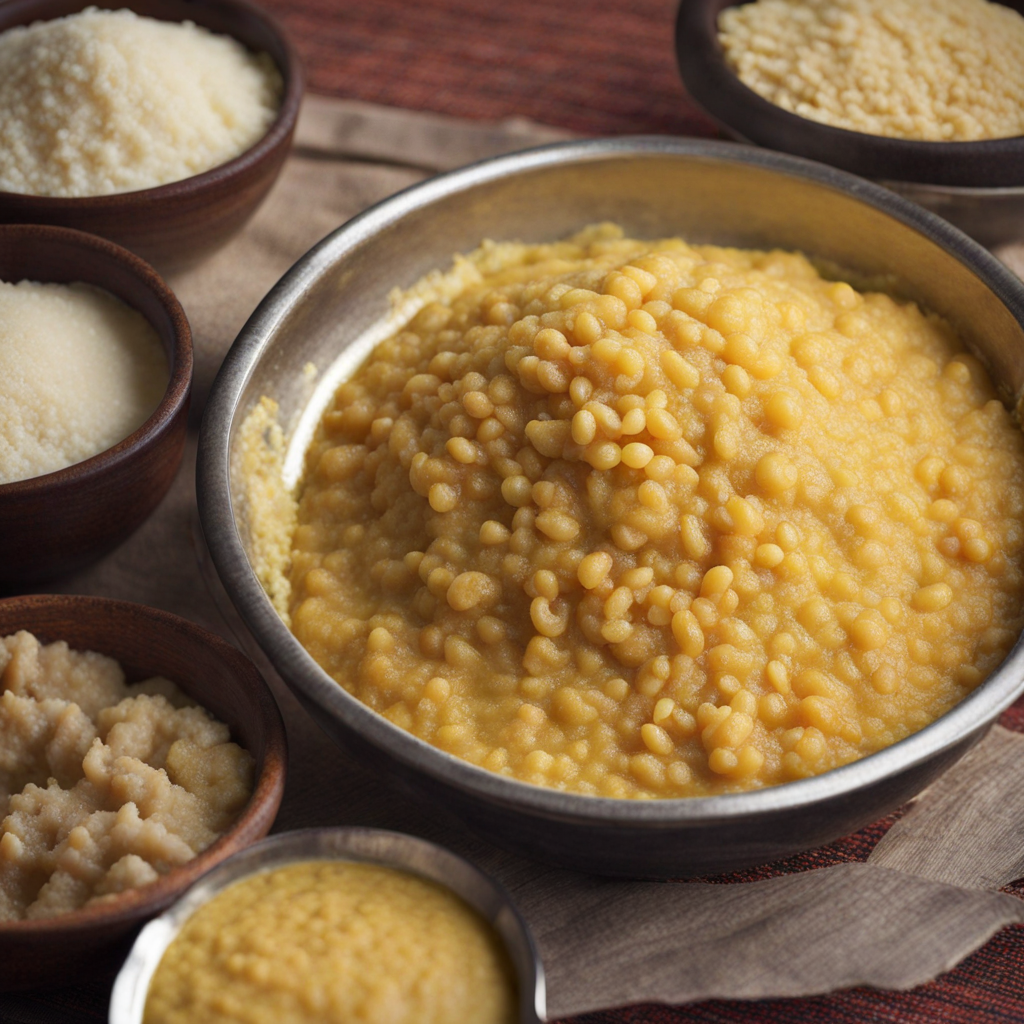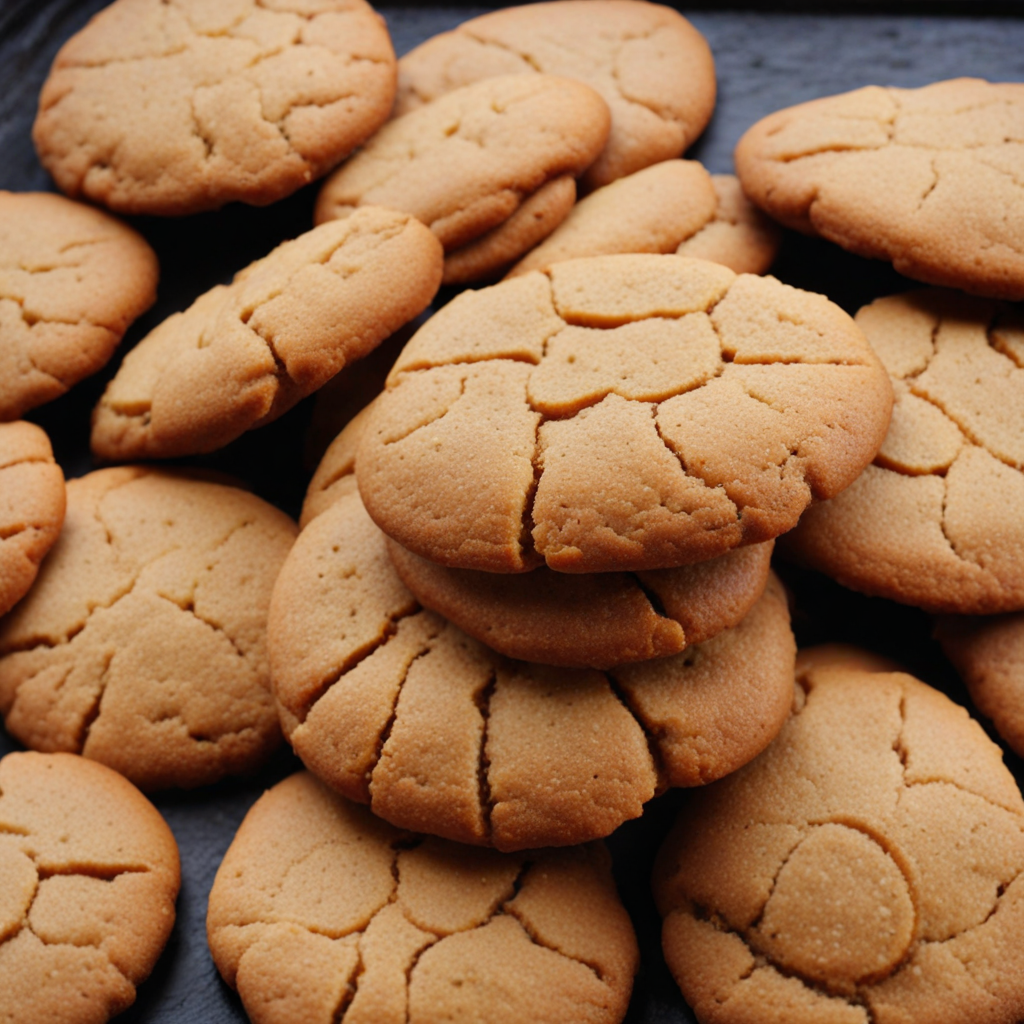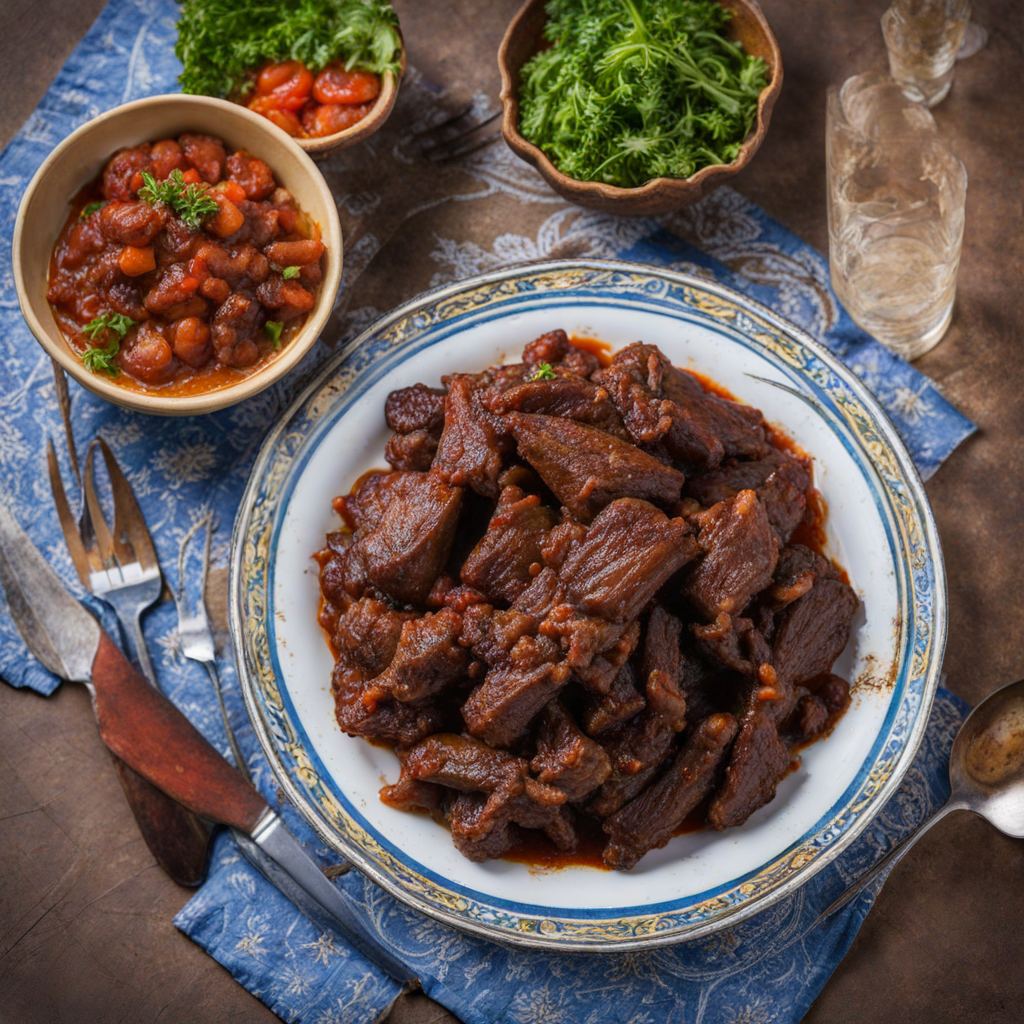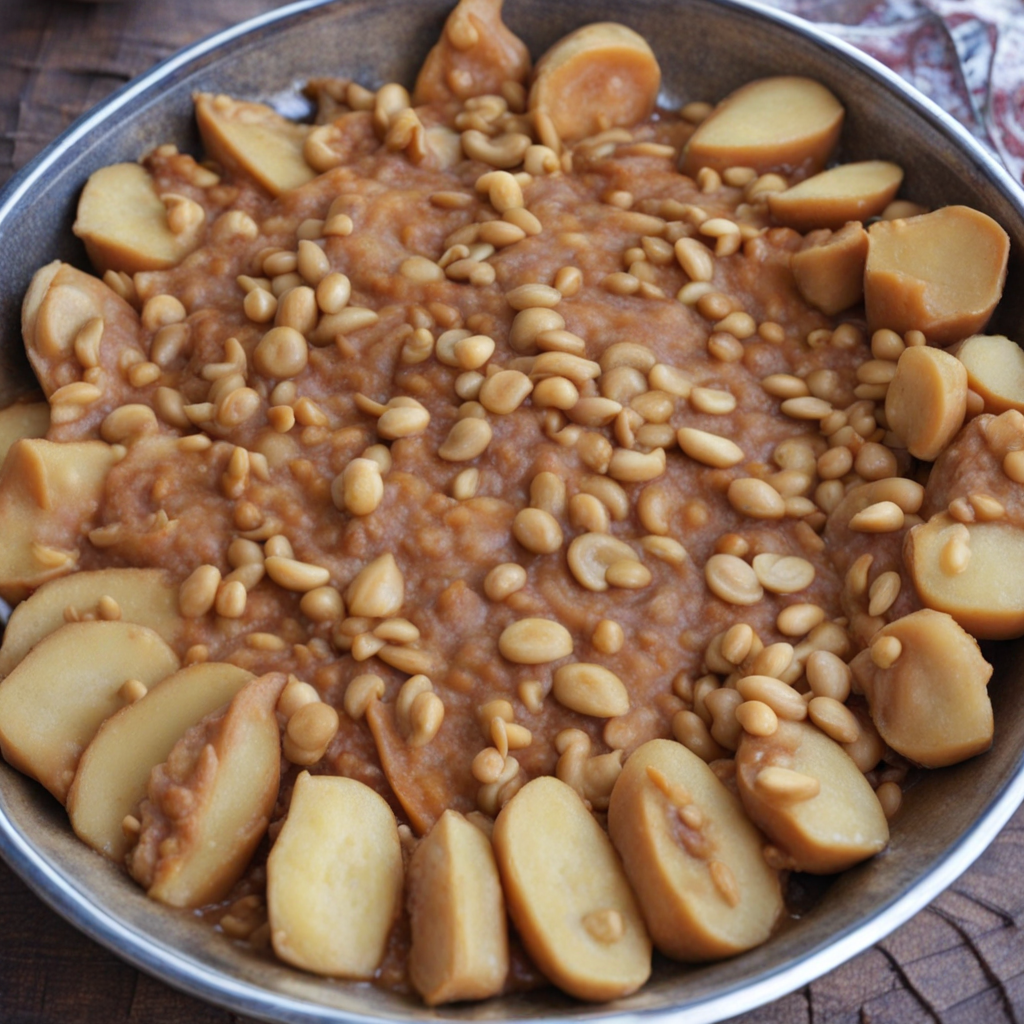Mkhwani
Mkhwani is a traditional Malawian dish that showcases the rich culinary heritage of the region. This delightful meal primarily consists of groundnut (peanut) flour, which is often mixed with a variety of local vegetables. The combination of the nutty flavor from the groundnuts and the earthy tones of the vegetables creates a harmonious balance that is both comforting and satisfying. The dish is typically served with nsima, a staple made from maize flour, which acts as the perfect accompaniment to soak up the rich and creamy sauce of Mkhwani. The preparation of Mkhwani is a labor of love, often involving the meticulous roasting and grinding of peanuts to create a smooth paste. This paste is then cooked down with chopped vegetables such as pumpkin leaves, spinach, or other seasonal greens, allowing the flavors to meld together beautifully. The process not only retains the nutritional value of the ingredients but also enhances their natural sweetness and depth. For those who enjoy exploring plant-based dishes, Mkhwani offers a delightful way to appreciate the wholesome goodness of local produce. Eating Mkhwani is an experience that goes beyond mere sustenance; it reflects the communal spirit of Malawi. Traditionally, it is enjoyed in gatherings and shared among family and friends, fostering connections through food. Each bite delivers a taste of Malawi’s vibrant culture, with the subtle hints of spices and herbs adding layers of flavor that linger on the palate. For anyone looking to embark on a culinary adventure, Mkhwani presents an opportunity to savor a dish that is both unique and deeply rooted in the Malawian way of life.
How It Became This Dish
Mkhwani: A Delicious Journey Through Malawian History #### Origins Mkhwani, a traditional dish from Malawi, holds a cherished place in the culinary landscape of this southeastern African nation. The dish is primarily made from pumpkin leaves, known locally as "mkhwani," which are often cooked with groundnuts (peanuts) and sometimes other ingredients such as onions and tomatoes. The name "mkhwani" itself derives from the Chichewa language, which is widely spoken in Malawi, signifying not just the dish but also a connection to the land and its natural bounty. The origins of mkhwani can be traced back to the agricultural practices of Malawi's early civilizations. The region's fertile soil and favorable climate allowed for the cultivation of a wealth of crops, including pumpkins, which were introduced to the area through trade routes connecting Africa to Asia. The indigenous peoples of Malawi began to incorporate pumpkin leaves into their diets, recognizing both their nutritional benefits and their availability throughout the year. This practice of using leafy greens in cooking is a hallmark of Malawian cuisine, reflecting the resourcefulness of its people in utilizing local ingredients. #### Cultural Significance Mkhwani is more than just a meal; it is steeped in cultural significance and tradition. In Malawi, food is an integral part of social gatherings, family, and community life. Mkhwani is often prepared during special occasions, such as weddings, festivals, and communal celebrations, where it is shared among family and friends. The act of cooking and eating together fosters a sense of unity and belonging, reinforcing the bonds of kinship and community. Pumpkin leaves are rich in vitamins and minerals, making mkhwani a nutritious option for many Malawians. In a country where food security can be a challenge, mkhwani serves as a reminder of the importance of local and sustainable agriculture. The dish embodies the principle of "ukubala," or sharing, which is central to Malawian culture. By preparing mkhwani, families not only nourish themselves but also honor their ancestors who cultivated the land and passed down agricultural knowledge through generations. Moreover, mkhwani is often accompanied by nsima, a staple food made from ground maize. This combination is a quintessential Malawian meal, symbolizing the agricultural heritage of the nation. The pairing of mkhwani with nsima reflects the reliance on local crops and the significance of maize in the Malawian diet. The meal serves as a reminder of the interconnectedness of different food items and the role they play in defining cultural identity. #### Development Over Time As Malawi has undergone social, economic, and political changes through the years, so too has the preparation and consumption of mkhwani. The colonial period, particularly during British rule from the late 19th to mid-20th centuries, had a profound effect on agricultural practices and local food systems. The introduction of cash crops like tobacco and tea shifted the focus away from subsistence farming, leading to changes in the way traditional foods were prepared and consumed. During this time, many Malawians began to adopt Western dietary habits, which sometimes overshadowed traditional dishes like mkhwani. However, even amidst these changes, mkhwani remained a staple in rural areas where the reliance on local crops persisted. The resilience of this dish is a testament to the enduring connection between the people of Malawi and their agricultural heritage. In the post-colonial era, as Malawi gained independence in 1964, there was a resurgence of interest in traditional foods and culinary practices. Efforts to promote food sovereignty and support local farmers led to a renewed appreciation for indigenous crops and dishes like mkhwani. This period saw the establishment of agricultural cooperatives and community gardens, emphasizing the importance of preserving traditional knowledge and practices. The rise of globalization and the influence of social media have also played a role in the evolution of mkhwani. As Malawian cuisine has gained international recognition, chefs and food enthusiasts have begun to experiment with traditional recipes, incorporating modern cooking techniques and fusion flavors. While some may argue that these innovations dilute the authenticity of the dish, they also serve to elevate mkhwani on a global stage, showcasing the rich culinary heritage of Malawi. In contemporary Malawi, mkhwani is often featured in restaurants and culinary festivals, celebrating its status as a beloved national dish. Efforts to document and share traditional recipes have also gained momentum, as younger generations seek to connect with their cultural roots. Organizations dedicated to preserving Malawian culinary traditions are working to ensure that dishes like mkhwani continue to be passed down through families and communities. #### Conclusion Mkhwani is more than just a dish; it embodies the spirit, resilience, and cultural identity of the Malawian people. Its origins in local agriculture, cultural significance in social gatherings, and adaptability over time reflect the dynamic nature of Malawian cuisine. As the world continues to evolve, mkhwani stands as a reminder of the importance of honoring culinary heritage while embracing innovation. In a global landscape where food often serves as a bridge between cultures, mkhwani invites us to explore the flavors of Malawi and the stories they tell. As we savor this delightful dish, we are not only tasting the ingredients but also understanding the rich tapestry of history, community, and tradition that it represents. Whether shared among family or enjoyed in a bustling marketplace, mkhwani remains a symbol of unity and nourishment, a delicious reflection of the heart and soul of Malawi.
You may like
Discover local flavors from Malawi



